Sidi’s Shot 2S shoe is an update to the Shot 2, sitting at the top of Sidi’s road shoe tree above the Wire 2S and Sixty.
The Shot began life when it was spotted by eagle-eyed fans being worn by Chris Froome at the 2016 Critérium du Dauphiné, and Froome rode them to victory in both the 2016 and 2017 Tour de France.
In testing, I’ve found the Shot 2S to be a top performer, exhibiting a great blend of stiffness, comfort (eventually) and ventilation. Assuming you have the budget, the only major con to note is an uncomfortable break-in period.
Sidi Shot 2S shoe construction
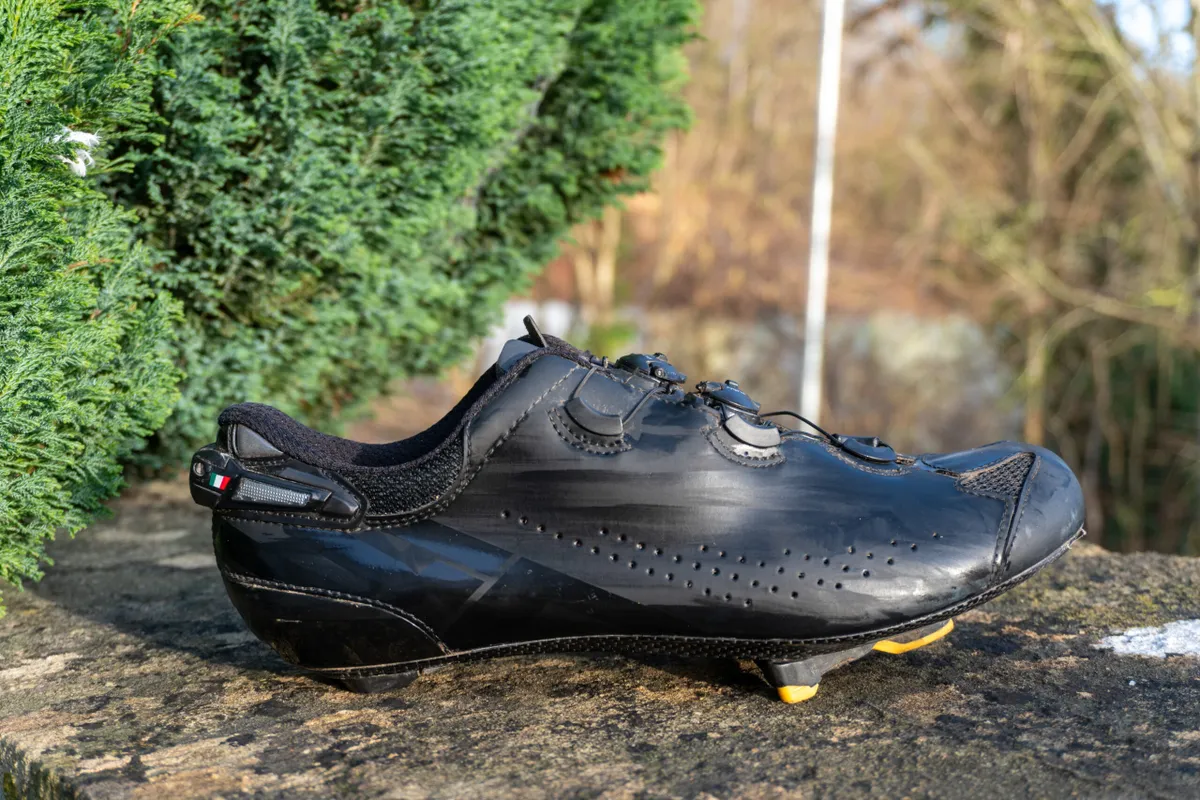
There’s no denying the Shot 2S resembles a Sidi shoe right away, with its unique appearance and neat detailing.
Sidi has made modest updates over the Shot 2, with the Italian brand focusing on improving comfort and using more sustainable fabrics. The branding is also quite minimal compared to previous Shot iterations, with a single logo on the outside of either shoe.
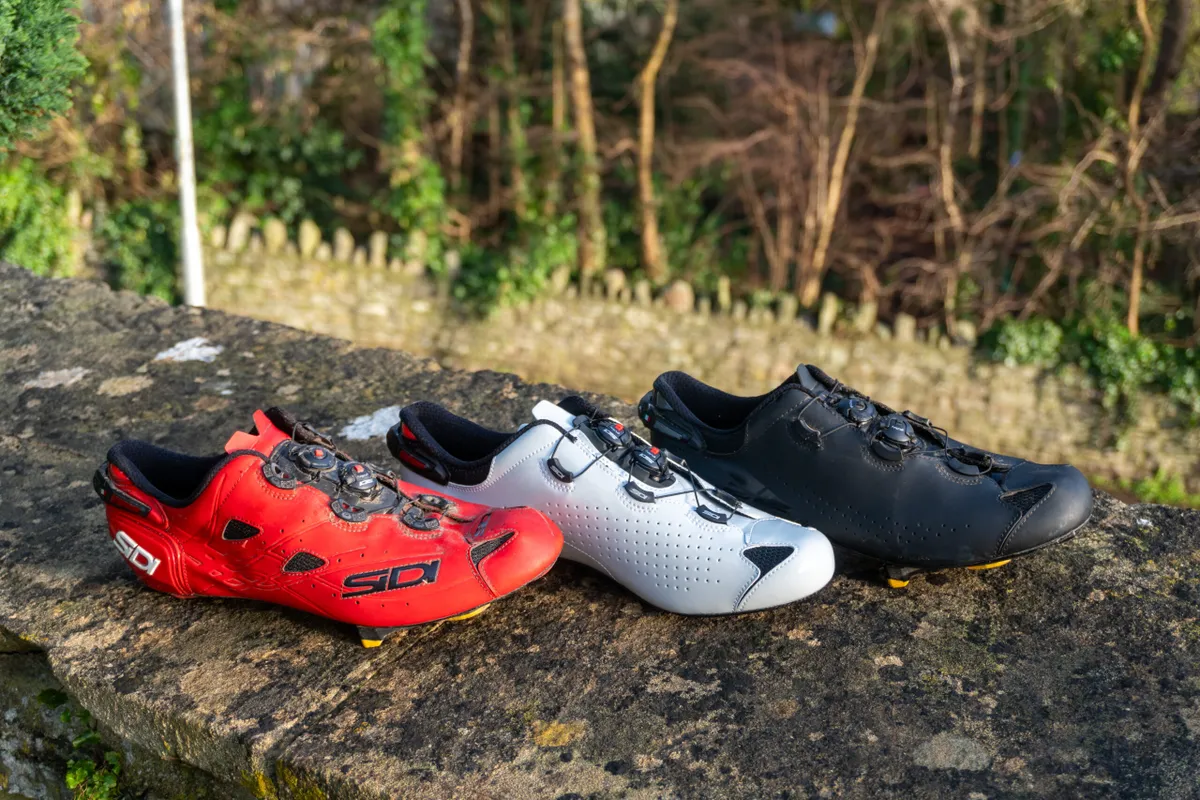
The upper is now made of recycled materials, specifically a mesh and ‘Bioveg’. Sidi says these are derived from recycled materials and cereals, and are claimed to be more breathable, abrasion-resistant and supportive.
The original Shot used Sidi’s Microfibre Techpro material for the upper, which was designed to repel water (and did so well, in my experience). The new unnamed upper fabric is also claimed to have some waterproofing apart from, of course, at the joins and the ventilation holes.
The new upper is paired with a ‘95 per cent recycled insole’.
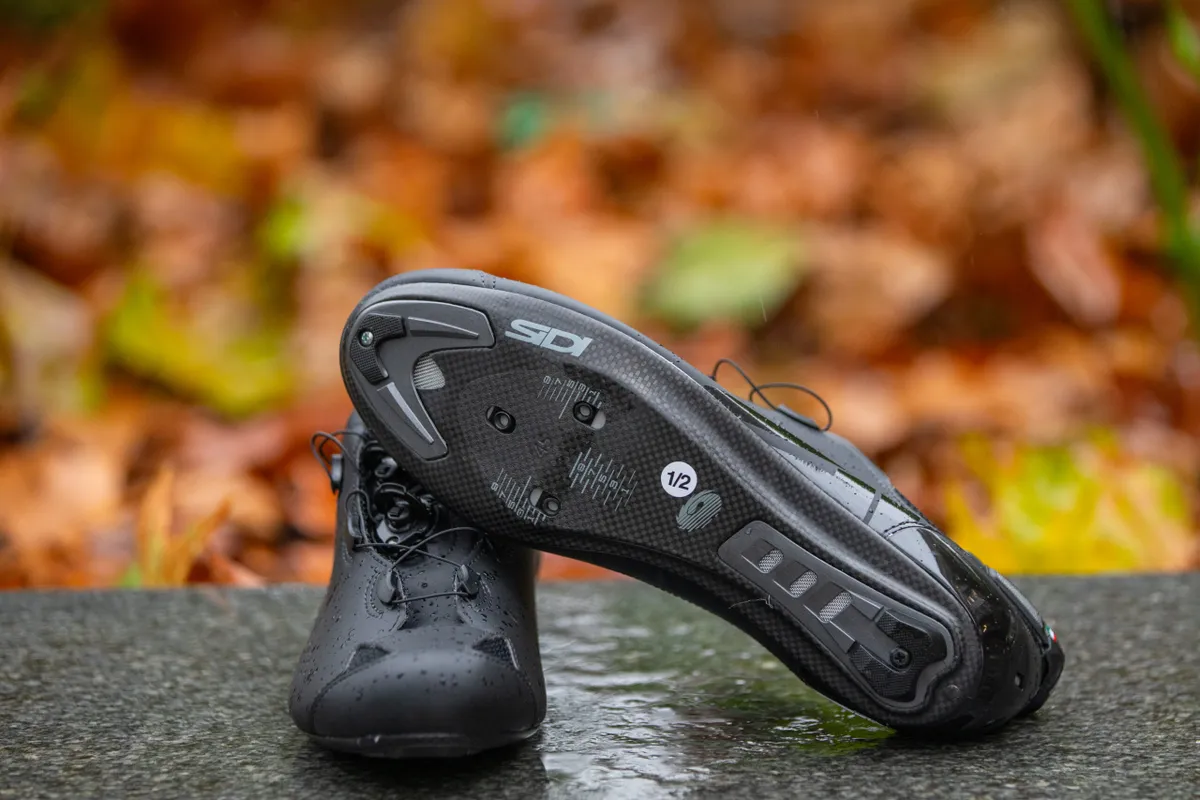
The C-Boost SRS carbon sole that was introduced on the Shot 2 remains, and is claimed to optimise power transfer and support. You get replaceable inserts at the heel and toe to customise fit, and the heel incorporates three ventilation ports on the underside (over the single port found on the ‘Vent Carbon Sole’ you get with the original Shot and the new Wire 2S).
There’s 5mm of fore and aft adjustment at the cleat holes, in comparison to the Wire 2S, which has fixed holes.
The Shot 2S sports a twin ‘Tecno 3 Push Flex’ dial-closure system on its tongue (over the conventional side location on virtually all the brand’s other shoes).
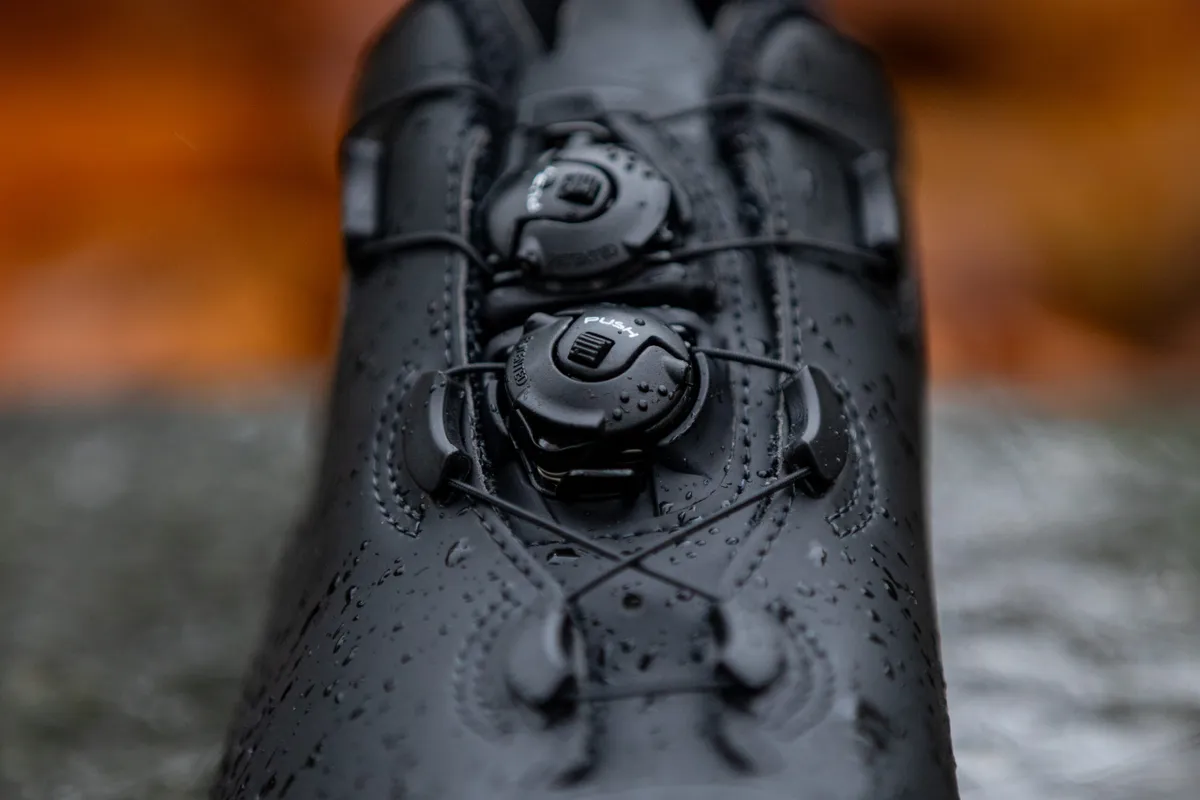
You simply lift the lever of the dial up and twist it clockwise to tighten the shoe. To release, you press on the two spring-loaded release buttons while twisting the dial in the opposite direction.
The dials use Dyneema cabling in an effort to make the actions smoother, as well as increase durability.
They’re also serviceable and replaceable, for example if the cable were to kink or if you were to damage them in a crash – although I’ve only ever had to replace them on Sidi mountain bike shoes before now.
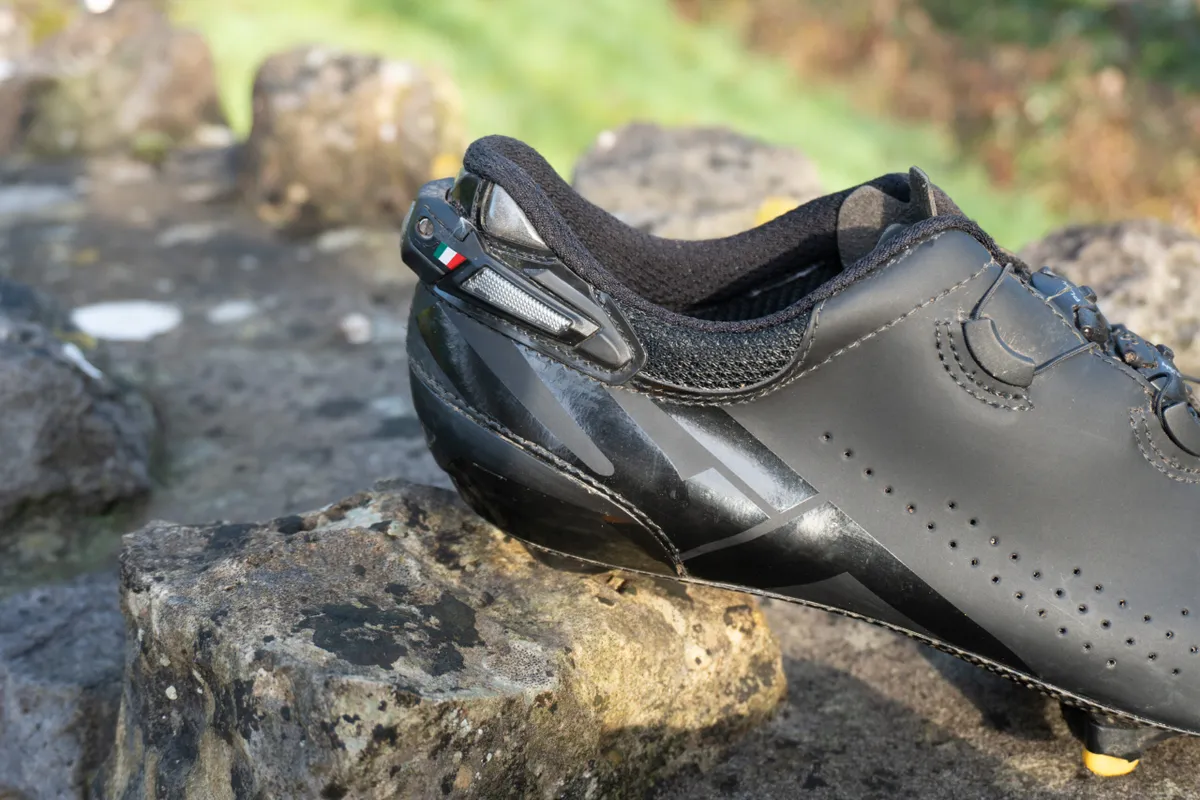
The ‘Adjustable Heel Retention Device’ on the back of the heel cup remains. Sidi says its primary intention is to avoid the heel slipping on climbs or sprints.
I’ve long appreciated this feature on other Sidi shoes because my heel is quite narrow – I’ve found it effectively locks it in place.
Three reflective inserts feature at the rear and sides of the device.
The shoes are available in four colours – Anthracite / Black, White / Black, Black / Grey and Black, with sizes ranging from EU40 to 48. Half sizes are offered between 40 and 47.
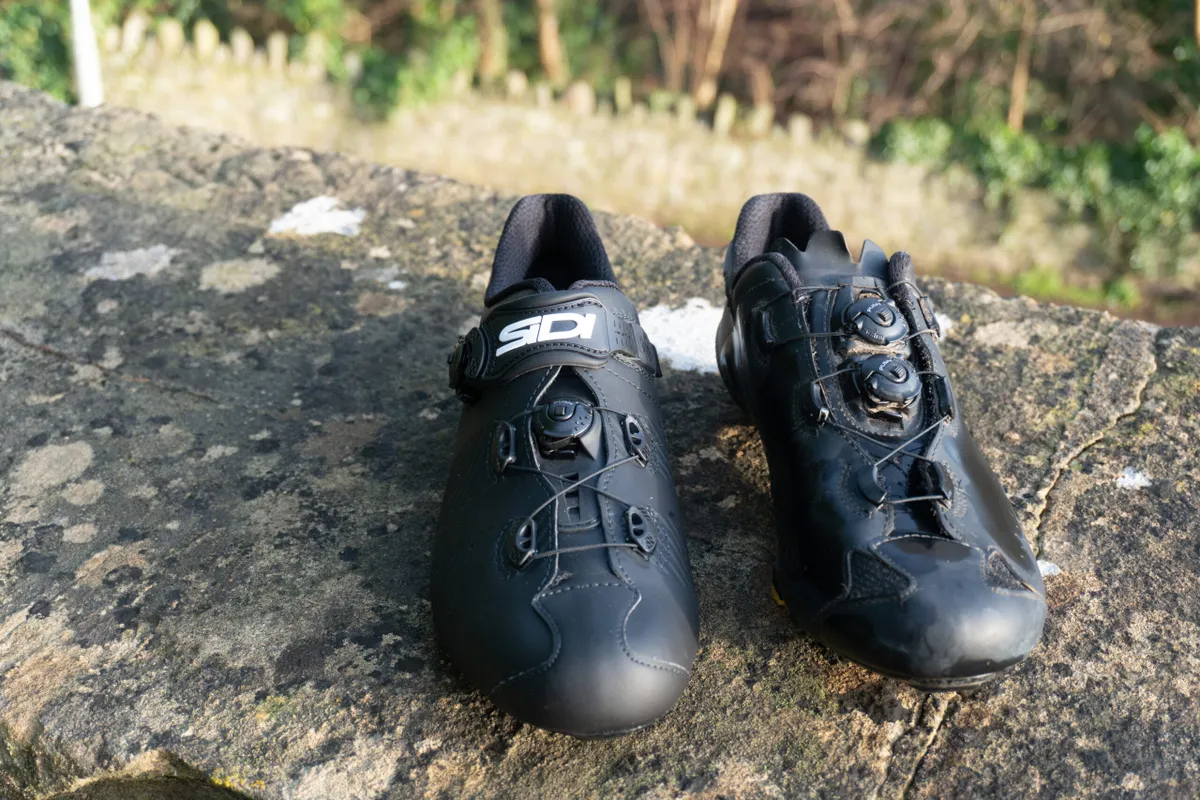
My size EU45.5 shoes weighed 650g for the pair – a 16g saving from my size-46 first-generation Shots. I weighed an equivalent size 45.5 Wire 2S at 674g a pair.
For comparison, Specialized’s S-Works Torch Lace weighs a mere 456g and the Fizik Vento Stabilita Carbon 586g, both in a size 45. Unless you’re racing hill climbs though, it’s a case of horses for courses.
Sidi Shot 2S shoe sizing and fit
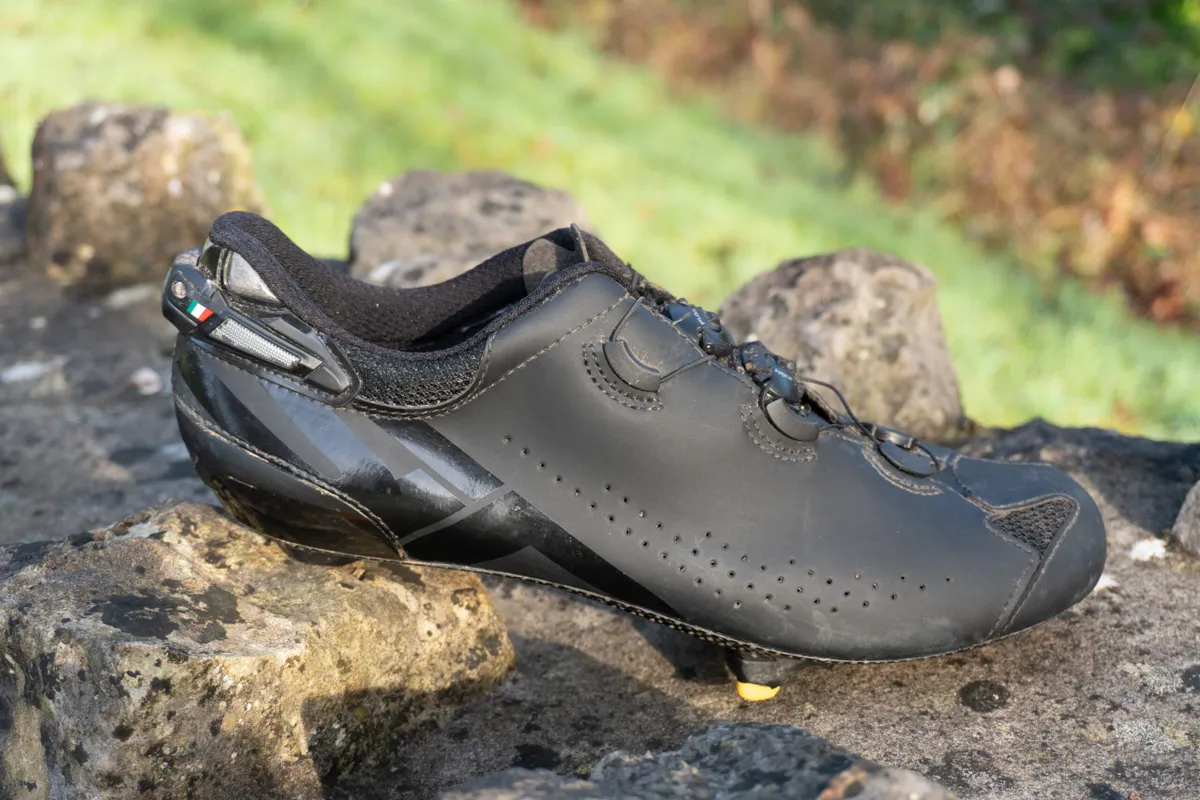
Being very familiar with Sidi’s sizing, I opted for a size EU45.5. My feet are fairly wide, but with a narrow heel, and I tend to take a size EU45 in most brands.
Older Sidi shoes, such as the original Shots, were notoriously narrow (hence my best size in those was EU46), but the brand has relaxed its sizing somewhat in the last couple of years.
It’s worth noting the sole length for a whole size and half size (e.g. EU45 and 45.5) is the same, however the upper on the half size has more fabric to better fit taller and wider feet.
Sidi doesn’t offer its ‘Mega’ variant in these shoes for those with extra-wide feet.
Out of the box, the shoes fitted me very well, with a nice and roomy toe box. I wound the ‘Adjustable Heel Retention Device’ so it was almost all of the way in.
Sidi Shot 2S shoe performance
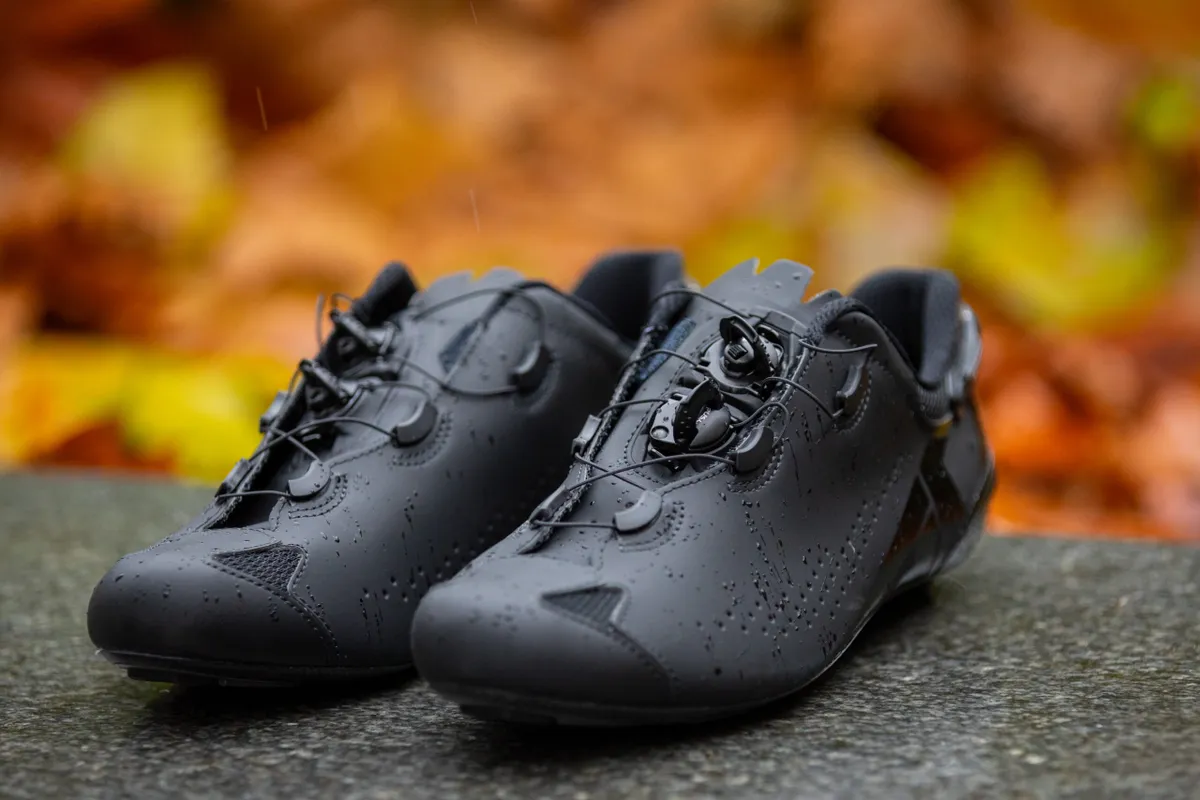
I tested the Sidi Shot 2S over 1,300km in a variety of weather conditions, with ambient temperatures ranging from -1°C to 23°C.
I replicated my cleat position from my other road shoes, and I didn’t encounter any issues with hotspots.
Putting the shoes on is straightforward, but removing them is a two-handed affair because you need to hold the heel cup with one hand while pressing on both dials with your other hand to lift your foot out.
The Tecno-3 dials are easy to use and you can increase the tension in minute adjustments when riding, but you can’t loosen them. The fact they are tongue-mounted ensures a more even fit because there is less tension on the upper being pulled across.
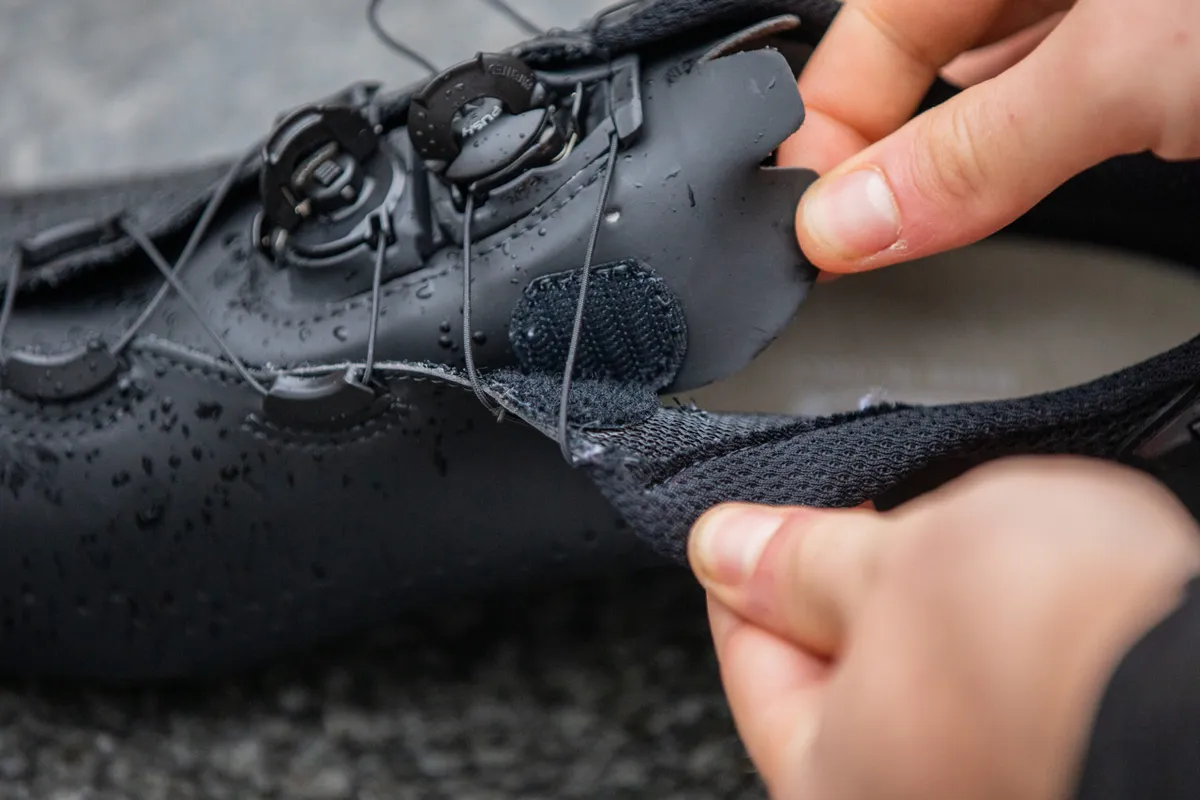
Unlike other Sidi shoes, which I’ve found relatively comfortable from the off, it took me two quite painful 125km rides to break the 2S shoes in. On both rides, the widest part of my right midfoot rubbed on the upper, although to a lesser extent on the second ride.
Wearing a new pair of shoes for a 125km ride is quite a bold (actually, stupid) move – I’d recommend taking a series of shorter rides to break shoes in.
However, since then the shoes haven’t caused any pain, including on multiple century rides, the longest being 220km.
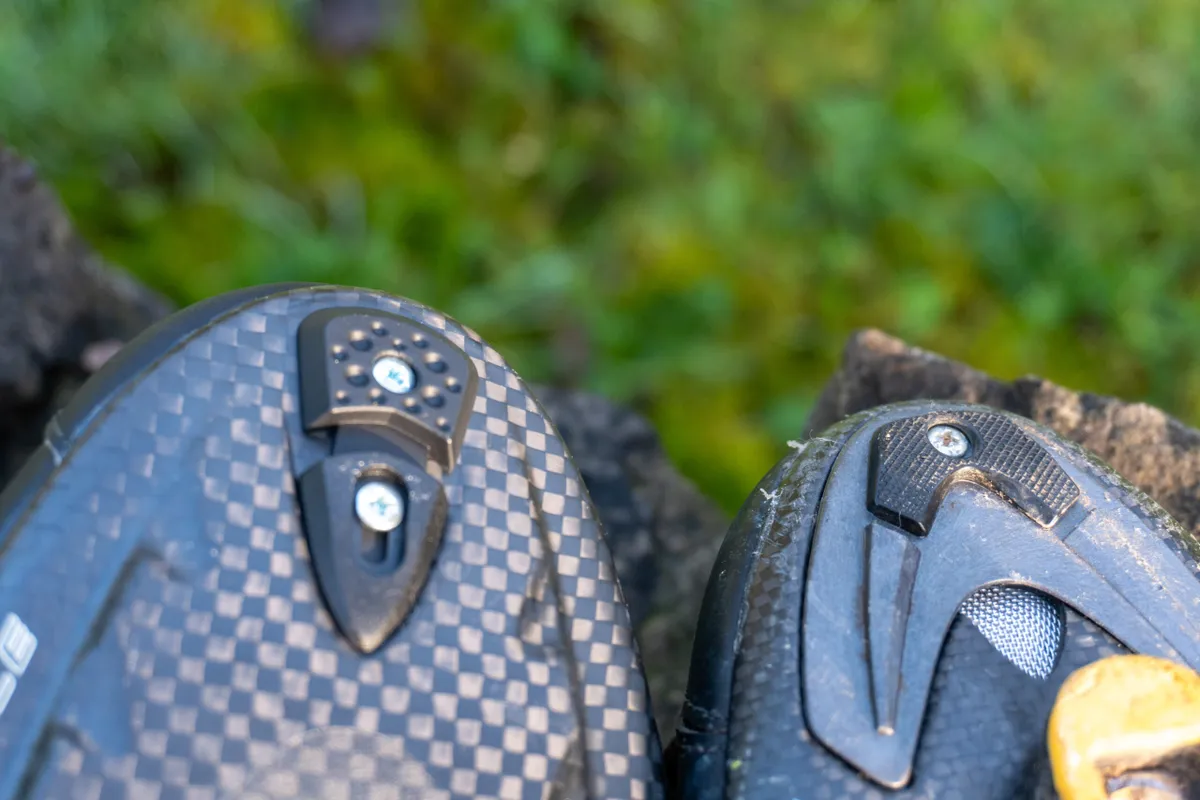
Ventilation was particularly excellent, despite the fact there isn’t an adjustable vent on the toe as there is on the first-generation Shot and the Wire 2S.
I could feel the warm Saharan wind work its way through the shoe when riding in Fuerteventura and appreciated the airflow when sweatily winching my way up prolonged ascents.
At the opposite end of the spectrum, my toes haven’t complained when riding in freezing temperatures with overshoes (although this is as much down to the performance of the overshoes as it is the shoes themselves).
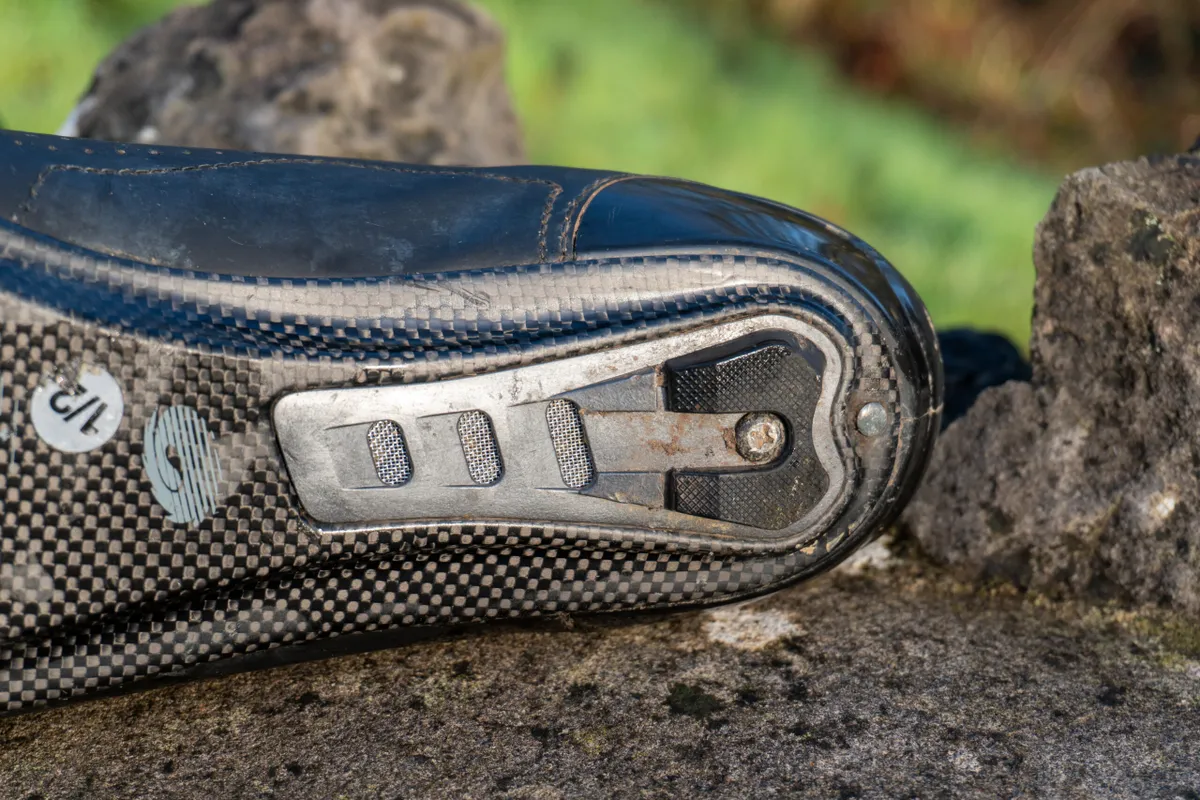
The carbon sole finds an efficient blend between delivering force to the pedals and not overwhelming your foot with harsh stiffness.
Still, I would say the sole is noticeably firmer than the Rapha Pro Team Lace Up shoes I recently tested, but that said, shoe stiffness doesn’t really matter.
Although the shoes aren’t light at 650g for the pair, you don’t feel the weight when you’re riding and I’ll happily take the hit for shoes that feel more luxurious, thanks to their premium construction and the fact they will last longer.
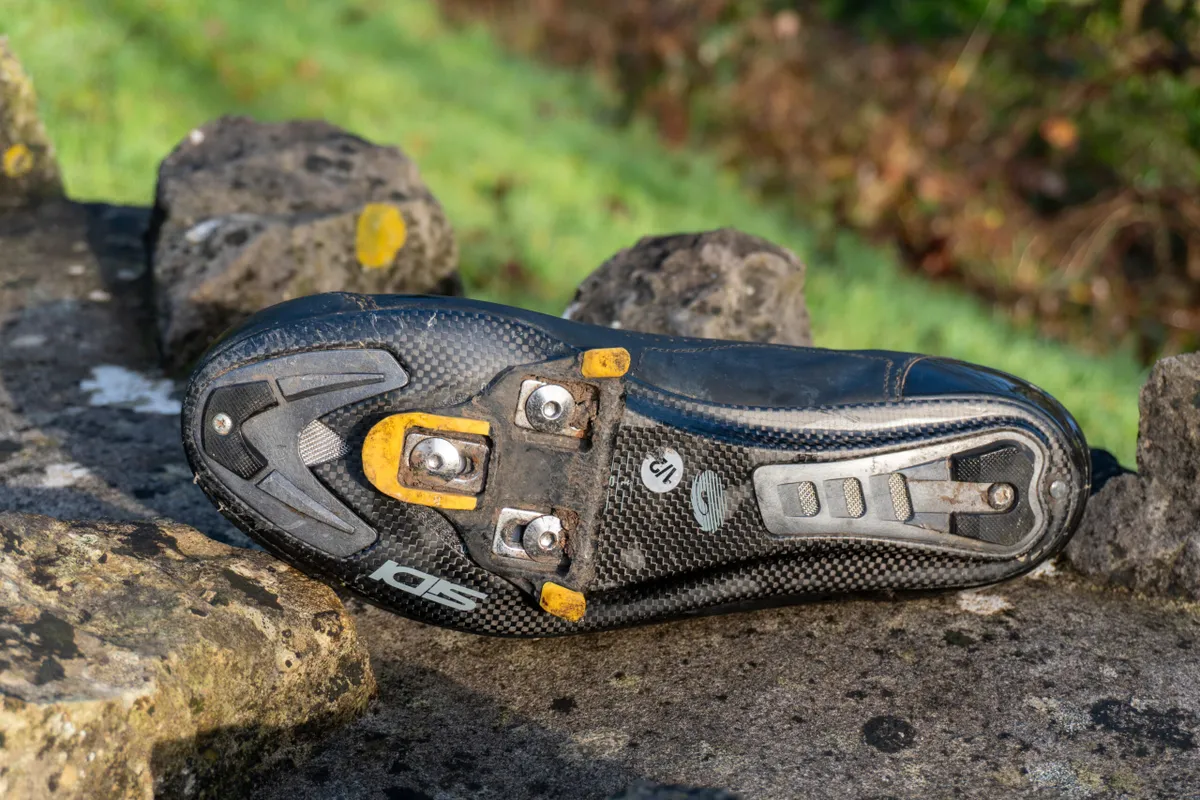
After three months of testing, other than some scratches on the sole (which is to be expected), the shoes aren’t showing any signs of wear.
At £425 / €419, the Shot 2S is a seriously spendy shoe. By comparison, the similarly high-spec Specialized S-Works Torch retails for £350 / $450 / €390 / AU$650 and Fizik’s Vento Stabilita Carbon costs £374.99 / $399.99 / €400.
However, although your wallet takes a bit more of an initial pounding, one could argue they may last longer considering the fact you can replace higher-wear parts (the dials, heel and toe treads) when they wear out.
Sidi Shot 2S bottom line
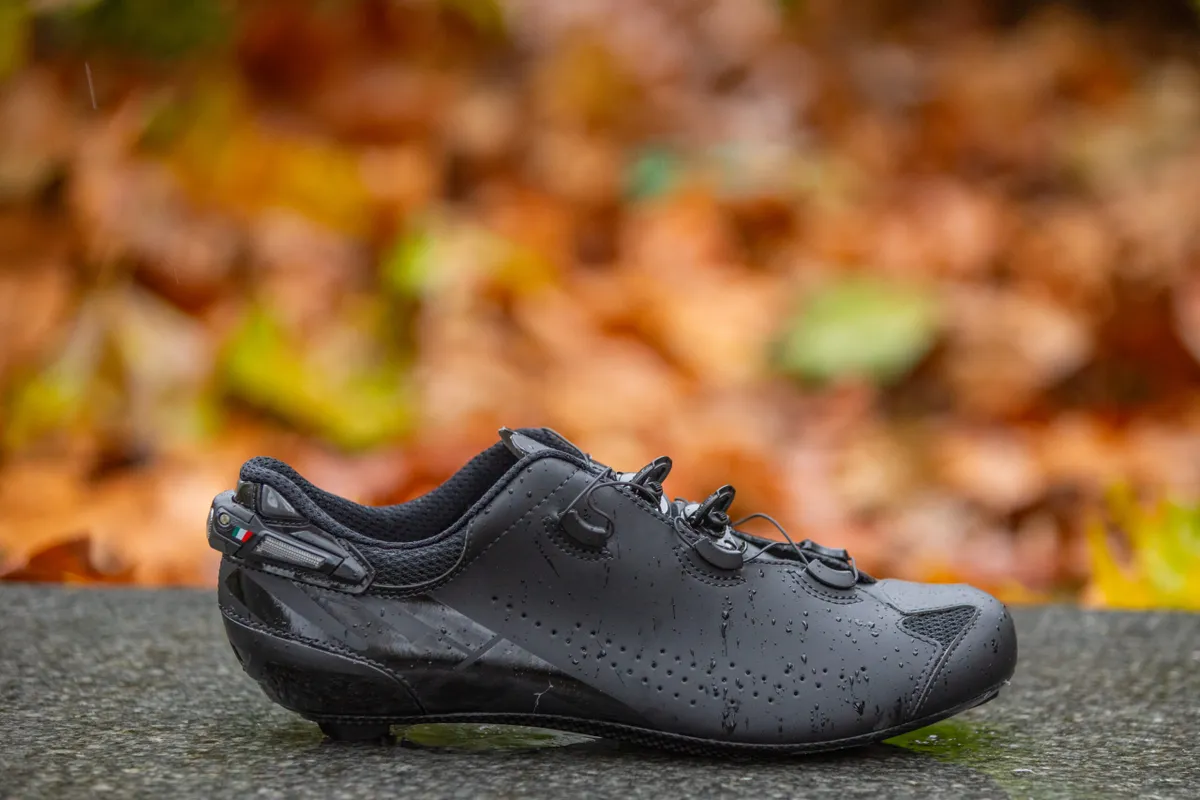
Sidi’s Shot 2S is a slam-dunk winner from the Italian brand, with the relatively minor updates improving what was already an excellent shoe.
Their premium construction sets these road shoes apart from the competition, while being visually striking, and the sole is as stiff as you’ll ever need.
What’s more, these are substantial shoes built to last, thanks to the fact that many of the high-wear parts are replaceable. This goes some way to justifying the extra money spent on these over other cycling shoes – but, of course, it’s a tall price tag to begin with.
Product
| Brand | Sidi |
| Price | €419.00, £425.00 |
| Weight | 650g |
Features
| Winter-specific | no |
| Triathlon/TT-specific | no |
| Shoe closure | dial |
| Cleat fitting | spd_sl |
| Sole | C-Boost SRS carbon sole |
